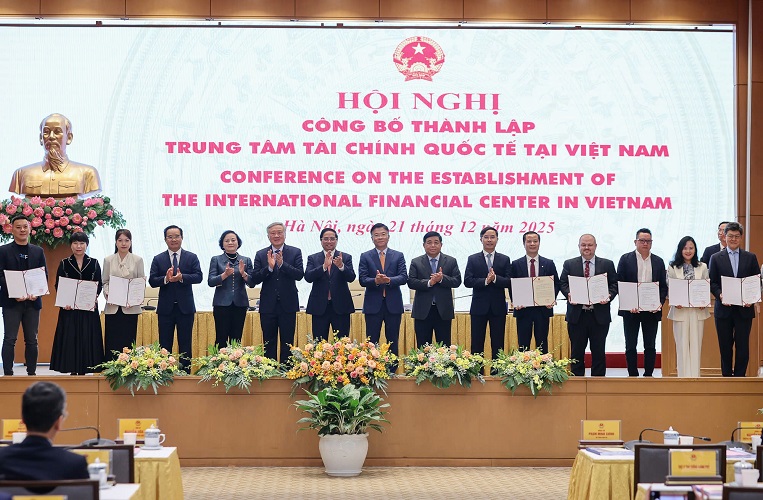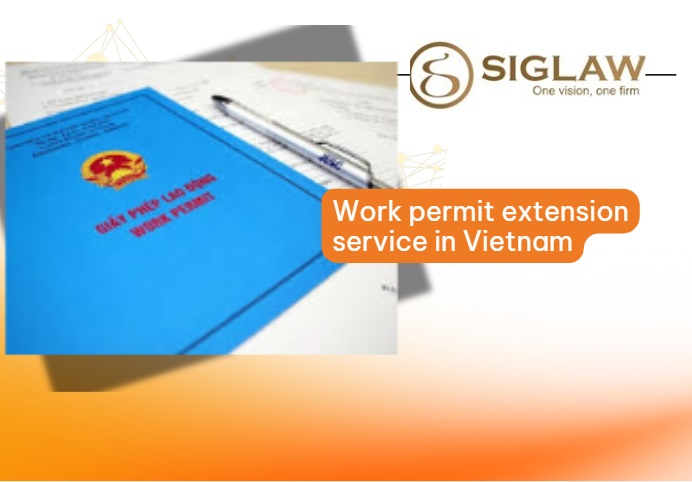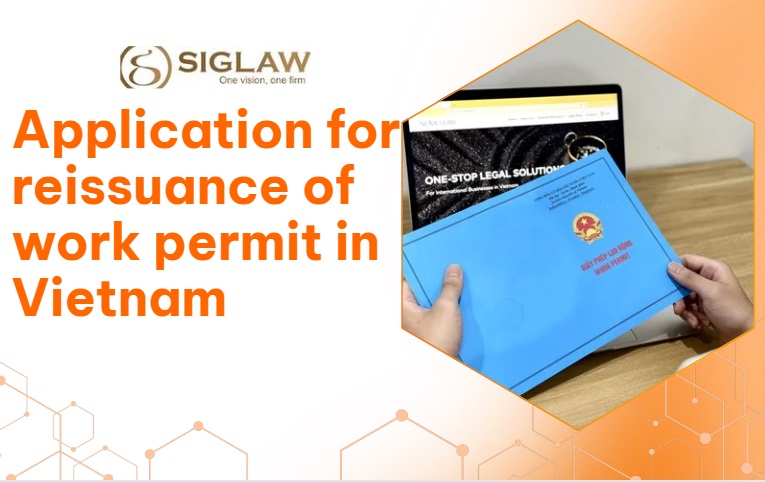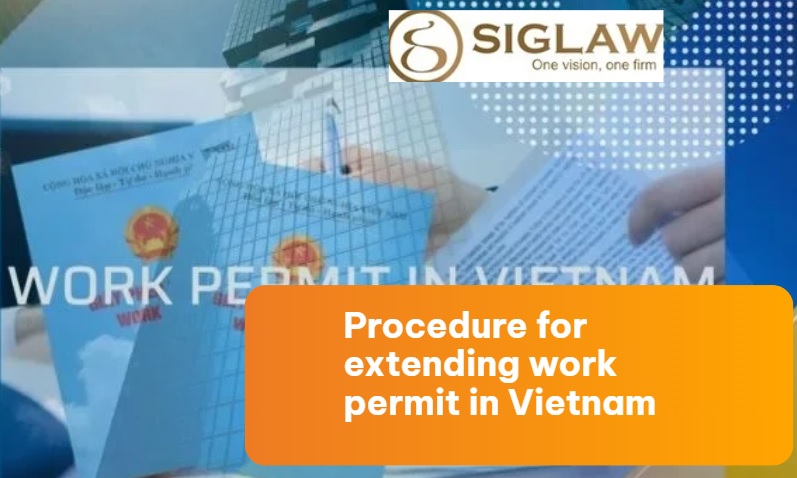LEGAL BASIS
- Investment Law 2020;
- Competition Law 2018;
- Decree 02/2022/ND-CP.
CONDITIONS FOR M&A OF REAL ESTATE ENTERPRISES
Prohibited cases of M&A of real estate enterprises
In the Enterprise Law 2005 provisions, only enterprises of the same type are allowed to merge. But after the Enterprise Law 2014 took effect and replaced the Enterprise Law 2005, and now the Enterprise Law 2020, mergers are no longer limited to enterprises of the same type, but other types of real estate enterprises can carry out M&A activities with each other.
Firstly, in general, Vietnamese law prohibits mergers of real estate enterprises in cases where the merging company has a market share of more than 50% in the relevant market, unless the Competition Law provides: a or many enterprises participating in the merger are in danger of being dissolved or falling into bankruptcy; the merger has the effect of expanding exports or contributing to socio-economic development, technical and technological progress.
If the merging company has a market share of between 30% and 50% in the relevant market, the legal representative of the company must notify the competition authority before proceeding with the merger.
The merger is only conducted for Limited Liability Companies, Joint Stock Companies, and Partnership Companies. The legal consequence of the merger is the termination of the existence of the merged companies.
Second, an important regulation to note is that according to Article 30 of the Competition Law 2018, economic concentration activities (including mergers and acquisitions of real estate enterprises) that affect or have the possibility of a significant anticompetitive effect on the Vietnamese market shall be prohibited.
The National Competition Commission will base on the following factors to assess the impact or potential for significant anti-competitive effects of economic concentration activities (mergers, acquisitions):
- Combined market share of enterprises participating in the economic concentration in the relevant market: 02 enterprises with a total market share of 50% or more in the relevant market; 03 enterprises with a total market share of 65% or more in the relevant market; 04 enterprises with a total market share of 75% or more in the relevant market; 05 enterprises or more with a total market share of 85% or more in the relevant market. Note that the above-mentioned group of enterprises with dominant market positions does not include enterprises with a market share of less than 10% in the relevant market. (According to Article 24 of the Competition Law 2018);
- Concentration in the relevant market before and after a merger or acquisition of a real estate company;
- Relationship of enterprises participating in mergers and acquisitions of real estate enterprises in the production and supply chain for real estate products or real estate business lines of enterprises participating in the M&A is each other’s input or complement each other;
- Competitive advantages that M&A of real estate enterprises bring in the relevant market;
- Possibility of a business after M&A to increase prices or increase profit margin on sales significantly;
- The ability of enterprises after M&A to eliminate or prevent other enterprises from entering or expanding the market;
- Specific factors in the industry or field in which enterprises participate in economic concentration.
If the merger and acquisition of a real estate company under which the company receives the merger and acquisition fall under the economic concentration notification threshold (For details, refer to Article 33 of the Competition Law 2018, Article 13 of Decree 35/2020) /ND-CP), the legal representative of the company shall notify the competition authority before performing the M&A of the real estate company. The subject of receipt and appraisal of notices of M&A is the National Competition Commission.
Case to carry out the acquisition and merger of real estate enterprises
Except for the prohibited mergers or acquisitions of real estate companies mentioned above, it can be observed that enterprises (of the same or different types) can merge and acquire real estate companies as long as they meet the standards of records, procedures, etc.
FORMS OF MERGER AND ACQUISITION OF REAL ESTATE ENTERPRISES
Currently, M&A for real estate enterprises can take many different forms. Based on the company’s financial structure, M&A can be conducted in the following ways:
- Acquisition and consolidations: Acquisition is a merger of one company with another, after which the acquired company ceases to exist and the acquiring company remains. In a consolidation, two or more companies (consolidating companies) may be consolidated into a new company (consolidated company), after which the consolidating companies cease to exist.
- Stock Acquisition: A company buys most or all of the shares of another company’s shareholders.
- Asset acquisition: This is the collective bargaining of companies to buy or sell a certain amount of the target company’s assets.
Among them, M&A by repurchasing shares or assets is the most popular.
PROCEDURES AND DOSSIERS FOR M&A OF REAL ESTATE ENTERPRISES
M&A of real estate enterprises through capital contributions and share purchase transactions
Dossier:
| STT | Types of documents | Note |
| 1 | Registration documents for capital contribution, share purchase, and capital contribution | Original |
| 2 | ID card/CCCD or passport for individual investors; a copy of the Certificate of Incorporation or other equivalent document certifying legal status for the investor as an organization. | Notarized copy |
| 3 | Other relevant documents | |
| Place of submission: Department of Planning and Investment, where the economic organization’s head office is located | ||
| The time limit for completing legal procedures: within 15 days | ||
Procedure:
Stage 1: Preparation (Pre-M&A)
Step 1: Develop an M&A strategy for the real estate business
Step 2: Approach your target enterprise
Step 3. Due diligence report
Stage 2: Negotiation and implementation (M&A signing)
Step 1: Negotiate and sign M&A
Step 2: Legal Procedures for recording M&A: Capital contribution/common share transfer transactions are conducted mainly among the Members, Shareholders of the Buyer and the Seller of the transaction and do not require approval/permission/licensing from the relevant government authorities.
The main requirements for the transfer focus on compliance with the terms of the capital contribution/share transaction, capital increase, issue of additional shares and regulations related to the sale of shares in the company’s charter and Investment Law. For a transfer of ownership, the parties to the transaction may have to meet various specific conditions depending on the type of assets they own.
It is necessary to carry out an additional procedure of “Registration for capital contribution, purchase of shares, and purchase of capital contribution of economic organizations” before carrying out the transfer transaction or contributing additional capital to the enterprise in Vietnam. However, the procedure is not required for all cases involving foreign investors and is limited to a few cases listed in Article 26, Clause 2 of the Investment Law. In addition, investors also need to pay attention to the procedures for transferring ownership and paying for share purchase and sale transactions.
Stage 3: Corporate restructuring (Post-M&A)
M&A of real estate enterprises through a transaction of real estate assets or real estate projects
This is a real estate project transfer that must meet the following criteria:
Type of real estate project eligible for transfer
- The purpose and content of the project remain unchanged even after the project is transferred. The rights and interests of customers and related parties are guaranteed if the project is assigned.
- Projects approved by competent government agencies and have an approved 1/500 detailed plan or master plan.
- The transferred project or part of the project has completed compensation and ground clearance.
- When transferring the entire infrastructure construction investment project, the relevant technical infrastructure works must be completed according to the schedule specified in the approved project.
- The project has no land use rights disputes, no land confiscation to secure judgment enforcement or compliance with administrative decisions of relevant state agencies.
- There are no decisions regarding the acquisition of projects or assets by responsible government agencies. The investor must issue a sanctioning decision if a violation occurs during the project implementation.
Subject
Transferor investor: Having obtained a certificate of land use right for the whole or part of the transferred project and having fulfilled the financial obligations related to the project’s land.
The transferee: must be a real estate business; have sufficient financial capacity to continue implementing the project; and commit to continue implementing construction investment in accordance with the provisions of law, ensuring the progress and content of the project.
Dossier
| STT | Transferor dossier | Transferee’s dossier |
| 1 | An application for transfer of the whole or part of a real estate project according to the form specified in Form No. 10 of the Appendix issued together with Decree 02/2022/ND-CP | Application form for receipt of the whole (or part) of the real estate project specified in Form No. 11 in the Appendix issued with Decree 02/2022/ND-CP |
| 2 | Documents (copy and present the original for comparison or a notarized copy when applying) about the transferred real estate project, including: investment approval written by a competent state agency; project approval decision; detailed planning 1/500 or drawing of the total ground; documents proving completion of project ground clearance; papers proving that the investment in construction of corresponding technical infrastructure works has been completed according to the schedule stated in the project (for the case of transfer of the entire infrastructure construction investment project); Certificate for the project. | Documents proving financial capacity; prove the mobilized capital sources (if any) in accordance with the law to ensure the continued implementation of the project according to the schedule approved by the competent authority; For real estate businesses that receive the transfer, they must have papers proving their financial capacity as prescribed in Clause 2, Article 4 of Decree 02/2022/ND-CP. |
| 3 | Draft contract for the transfer of all or part of the real estate project as prescribed in Article 6 of Decree 02/2022/ND-CP | Certificate of enterprise registration or Certificate of investment registration or documents proving the establishment of the organization (copy and present the original for comparison or a notarized copy when applying) |
| 4 | Report on the implementation of the real estate project up to the time of transfer using the form specified in Form No. 12 of the Appendix issued together with Decree 02/2022/ND-CP | |
| Place of submission: Provincial People’s Committee where the project is located (For projects whose investment policy is decided by the Prime Minister)
The People’s Committee of the province where the project is located; or Department of Construction: For new urban area projects, housing development projects; or Department of specialized management: For other real estate projects (For real estate projects decided on investment policies by the provincial People’s Committee) |
||
Stage 1: Preparation (Pre-M&A)
Step 1: Develop an M&A strategy for the real estate business
Step 2: Approach the target enterprise
Step 3. Due diligence report
Stage 2: Negotiation and implementation (M&A signing)
Step 1: Negotiate and sign M&A
Step 2: Legal procedures to record M&A
- The transferor submits documents to the competent authority for approval;
- Competent agencies shall collect opinions and appraise transfer conditions;
- Issue a decision to permit the transfer;
- The transferor and the transferee sign the Transfer Contract and perform according to the Transfer Contract as well as complete the transfer and handover of the project. The above contract has the content prescribed in Article 53 of the Law on Real Estate Business.
Stage 3: Corporate restructuring (Post-M&A)
M&A of real estate enterprises through other transactions
Debt restructuring of real estate businesses to carry out M&A
Stage 1: Preparation (Pre-M&A)
Step 1: Develop an M&A strategy for the real estate business
Step 2: Approach the target enterprise
Step 3. Due diligence report
Stage 2: Negotiation and implementation (M&A signing)
Step 1: Negotiate and sign M&A
Step 2: Legal procedures to record M&A
- Debt buyers value the debt, the target company, and the target asset;
- The parties sign the debt purchase and sale contract in accordance with the law;
- Next steps to end the M&A transaction. For example: Completing a debt-to-equity/share conversion transaction of the real estate owner through which “indirect” ownership of the real estate; or taking steps to settle the debt as a new creditor to take ownership of the property.
Stage 3: Corporate restructuring (Post-M&A)
Convertible loans or investments in convertible bonds of real estate businesses
Stage 1: Preparation (Pre-M&A)
Step 1: Develop an M&A strategy for the real estate business
Step 2: Approach the target enterprise
Step 3. Due diligence report
Stage 2: Negotiation and implementation (M&A signing)
Step 1: Negotiate and sign M&A
Step 2: Legal procedures to record M&A
- Through the convertible loan/investment contract, the Buyer invests in convertible bonds to finance real estate businesses. The buyer becomes the creditor of the real estate company;
- Based on the terms of the convertible loan contract or convertible bond, the buyer exercises the right to convert to contribute more capital or buy more outstanding shares of the real estate company;
- Buyer and Seller settle debt and purchase more shares/contributed capital.
Stage 3: Corporate restructuring (Post-M&A)
For a free comprehensive M&A consultation, please contact:
Siglaw Firm
Head office in Hanoi City: No.44/A32-NV13, Gleximco A, Le Trong Tan Street, Tay Mo Ward, Ha Noi.
Email: vphn@siglaw.com.vn
Branch in the South: No.103 – 105 Nguyen Dinh Chieu Str., Xuan Hoa Ward, Ho Chi Minh.
Central Branch: 177 Trung Nu Vuong Street, Hai Chau District, Danang City
Email: vphcm@siglaw.com.vn
Hotline: 0961 366 238









